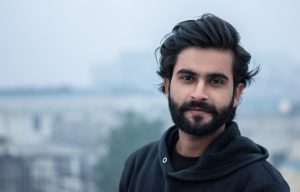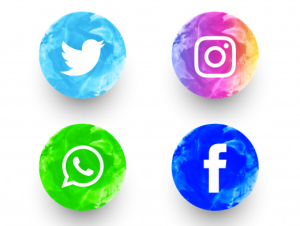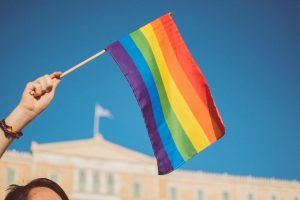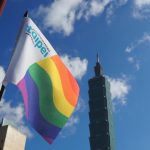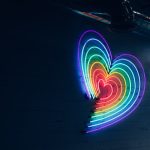A Short History Of Lesbian, Gay, Bisexual, And Transgender Social Movements
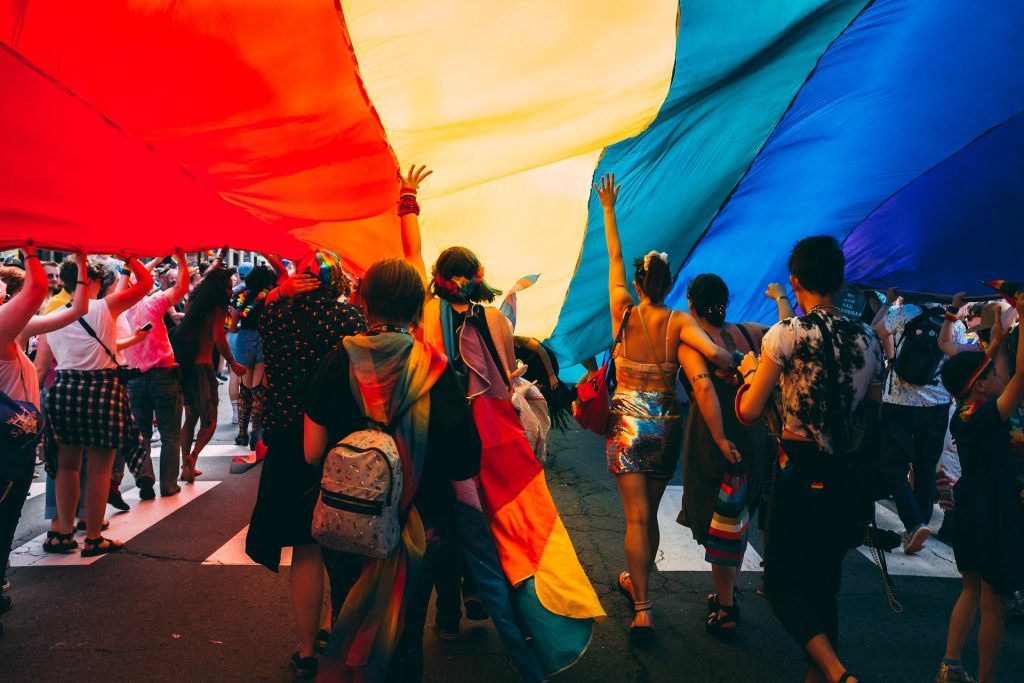
Social activities, arranging around the approval and legal rights of persons that might today determine as LGBT or queer, started as actions to centuries of oppression by church, state, and clinical authorities. Where homosexual task or deviance from established gender roles/dress was outlawed by regulation or conventional custom-made, such stricture might be interacted with astonishing public tests, exile, clinical warnings, and language from the pulpit. These courses of oppression entrenched homophobia for centuries– yet additionally informed entire populaces to the presence of distinction.
Whether a private identified they, also, shared this identity and were at danger, or risked to speak out for tolerance and modification, there were couple of companies or sources before the scientific and political transformations of the 18th and 19th centuries. Gradually, the development of a public media and suitables of human rights drew together activists from all profession, who drew guts from sympathetic medical studies, banned literature, arising sex research, and an environment of better freedom.
By the 20th century, an activity in acknowledgment of gays and lesbians was underway, urged by the social climate of feminism and brand-new sociologies of difference. Nonetheless, throughout 150 years of homosexual social movements (approximately from the 1870s to today), leaders and organizers had a hard time to deal with the extremely different worries and identity problems of gay males, females recognizing as lesbians, and others determining as gender version or nonbinary. White, male, and Western lobbyists whose groups and theories gained take advantage of against homophobia did not necessarily stand for the variety of racial, class, and nationwide identities complicating a broader LGBT agenda. Women were typically omitted completely.
What is the prehistory of LGBT advocacy? Many chroniclers concur that there is evidence of homosexual activity and same-sex love, whether such partnerships were approved or maltreated, in every recorded culture. We understand that homosexuality existed in old Israel simply because it is forbidden in the Holy bible, whereas it thrived between both men and women in Ancient Greece. Significant evidence also exists for people who lived at least part of their lives as a different gender than assigned at birth. From the lyrics of same-sex need engraved by Sappho in the 7th century BCE to youths raised as the opposite sex in societies ranging from Albania to Afghanistan; from the “female spouses” of Kenya to the Indigenous American “Two-Spirit,” options to the Western male-female and heterosexual binaries grew throughout millennia and society.
These truths gradually ended up being known to the West using travelers’ diaries, the church records of promoters, diplomats’ journals, and in records by medical anthropologists. Such eyewitness accounts in the era before various other media were certainly riddled with the biases of the (commonly) Western or White viewer, and added to ideas that homosexual practices were various other, international, savage, a clinical concern, or evidence of a reduced racial hierarchy. The tranquil blooming of very early trans or bisexual acceptance in different aboriginal human beings met resistance from European and Christian colonizers.
In the age of European exploration and empire-building, Native American, North African, and Pacific Islander cultures accepting of “Two-Spirit” individuals or same-sex love surprised European intruders who objected to any type of variance from a minimal understanding of “manly” and “womanly” functions. The European powers enforced their own criminal codes versus what was called sodomy in the New World: the first known situation of homosexual task receiving a death penalty in North America happened in 1566, when the Spanish performed a Frenchman in Florida.
Versus the emerging backdrop of national power and Christian faith, what could have been learnt more about same-sex love or gender identification was hidden in rumor. Actually, both wartime problem in between arising nations and the separation or fatalities of male soldiers left ladies behind to live together and promoted solid partnerships in between males also. Same-sex friendship grew where it was discredited for unmarried, unrelated men and females to mingle or mingle easily. Female’s connections particularly got away examination considering that there was no risk of maternity. Nevertheless, in much of the world, female sex and experience were stopped wherever genital circumcision practices made clitoridectomy an ongoing personalized.
Where European dress– a clear pen of gender– was imposed by promoters, we discover one more challenging background of both sex identity and resistance. Biblical analysis made it unlawful for a lady to use trousers or a man to embrace female outfit, and sensationalized public trials warned versus “deviants” but likewise made such saints and heroes popular: Joan of Arc is one instance, and the chilling beginnings of the word “faggot” include a stick of wood made use of in public burnings of gay men.
Despite the threats of defying serious legal codes, cross-dressing thrived in early contemporary Europe and America. Ladies and ladies, financially oppressed by the sexism which kept them from jobs and economic/education possibilities designated for males just, may pass as male in order to get to desirable experiences or income. This was an option made by many ladies who were not always transgender in identity. Ladies “disguised” themselves as men, in some cases for extensive periods of years, in order to deal with in the military (Deborah Sampson), to work as pirates (Mary Read and Anne Bonney), attend medical college, etc. Both males and females that lived as a various gender were usually just uncovered after their fatalities, as the extreme differences in male vs. female garments and pet grooming in much of Western society made “passing” surprisingly very easy in particular environments.
Furthermore, functions in the arts where females were outlawed from functioning called for that men be recruited to play female roles, commonly producing a high-status, competitive market for those we might today determine as trans females, in venues from Shakespeare’s theatre to Japanese Kabuki to the Chinese opera. This acceptance of efficiency musicians, and the popularity of “drag” wit cross-culturally, did not necessarily note the begin of transgender advocacy, but made the arts a typically approving shelter for LGBT individuals who constructed staged professions based around disguise and illusion.
The era of sexology research studies is where we initially see a small, blessed collection of clinical authorities begin promoting a minimal tolerance of those birthed “invert.” In Western history, we find little official study of what was later called homosexuality before the 19th century, past clinical messages identifying women with large clitorises as “tribades” and extreme penalty codes for male homosexual acts.
Early efforts to comprehend the range of human sex-related behavior originated from European doctors and researchers consisting of Carl von Westphal (1869 ), Richard von Krafft-Ebing (1882) and Havelock Ellis (1897 ). Their works were sympathetic to the idea of a homosexual or bisexual positioning occurring normally in an identifiable section of humankind, but the writings of Krafft-Ebing and Ellis also identified a “third sex” degenerate and uncommon. Sigmund Freud, writing in the very same period, did rule out homosexuality a disease or a criminal offense and thought bisexuality to be an inherent aspect starting with obscure gender advancement in the womb. Yet Freud additionally really felt that lesbian desires were an immaturity females might get rid of via heterosexual marriage and male prominence.
These writings slowly trickled to a curious public through magazines and discussions, getting to males and females determined to learn more concerning those like themselves, including some like English writer Radclyffe Hall that voluntarily accepted the concept of being a “genetic invert.” German scientist Magnus Hirschfeld went on to gather a more comprehensive variety of information by establishing Berlin’s Institute for Sexual Science, Europe’s finest library archive of products on gay cultural background. His efforts, and Germany’s more liberal laws and thriving gay bar scene between both World Wars, contrasted with the backlash, in England, against gay and lesbian writers such as Oscar Wilde and Radclyffe Hall. With the surge of Hitler’s Third Reich, nevertheless, the previous resistance shown by Germany’s Scientific Good samaritan Board disappeared. Hirschfeld’s wonderful collection was ruined and the books burned by Nazis on May 10, 1933.
In the USA, there were couple of efforts to produce campaigning for groups sustaining gay and lesbian connections up until after The second world war. However, prewar gay life prospered in urban centers such as New york city’s Greenwich Town and Harlem throughout the Harlem Renaissance of the 1920s. The blues music of African-American females showcased varieties of lesbian desire, battle, and humor; these efficiencies, along with man and female drag celebrities, presented a gay underworld to straight customers throughout Prohibition’s defiance of race and sex codes in speakeasy clubs.
The disruptions of World War II allowed previously separated gay males and females to fulfill as soldiers and war employees; and other volunteers were rooted out from small towns and published worldwide. Lots of minds were opened by wartime, throughout which LGBT individuals were both tolerated in army solution and formally punished to extermination camp in the Holocaust. This boosting understanding of an existing and vulnerable population, coupled with Senator Joseph McCarthy’s investigation of homosexuals holding government jobs throughout the early 1950s furious writers and federal staff members whose own lives were revealed to be second-class under the legislation, consisting of Frank Kameny, Barbara Gittings, Allen Ginsberg, and Harry Hay.
Understanding of a growing civil liberties activity (Martin Luther King’s essential organizer Bayard Rustin was a gay guy) led to the first American-based political demands for fair treatment of gays and lesbians in mental health, public policy, and work. Researches such as Alfred Kinsey’s 1947 Kinsey Record suggested a far higher range of homosexual identities and actions than formerly understood, with Kinsey developing a “range” or spectrum ranging from total heterosexual to finish homosexual.
The main company for gay guys as an oppressed cultural minority was the Mattachine Culture, founded in 1950 by Harry Hay and Chuck Rowland. Various other vital homophile organizations on the West Shore consisted of One, Inc., founded in 1952, and the first lesbian support network Little girls of Bilitis, founded in 1955 by Phyllis Lyon and Del Martin. With conferences and publications, these teams used info and outreach to thousands.
These very first companies quickly found support from famous sociologists and psycho therapists. In 1951, Donald Webster Cory released “The Homosexual in America,” insisting that gay guys and lesbians were a genuine minority team, and in 1953 Evelyn Hooker, PhD, won a grant from the National Institute of Mental Wellness to research gay males. Her revolutionary paper, offered in 1956, demonstrated that gay guys were as well-adjusted as heterosexual men, frequently more so.
However it would certainly not be up until 1973 that the American Psychiatric Organization eliminated homosexuality as an “health problem” classification in its diagnostic manual. Throughout the 1950s and 60s, gay men and lesbians continued to be at risk for psychiatric lockup along with prison, losing tasks, and/or kid wardship when courts and centers specified gay love as sick, criminal, or immoral.
In 1965, as the civil liberties motion won new legislation banning racial discrimination, the initial gay rights presentations occurred in Philadelphia and Washington, D.C., led by longtime activists Frank Kameny and Barbara Gittings. The turning point for gay freedom began June 28, 1969, when customers of the popular Stonewall Inn in New York’s Greenwich Town resisted against recurring police raids of their neighborhood bar. Stonewall is still considered a watershed moment of gay pride and has been commemorated given that the 1970s with “pride marches” held every June across the United States. Current scholarship has actually called for much better recommendation of the duties that drag performers, people of color, bisexuals, and transgender customers played in the Stonewall Troubles.
The gay freedom activity of the 1970s saw myriad political organizations emerge, usually up in arms with each other. Discouraged with the male management of most gay freedom groups, lesbians affected by the feminist movement of the 1970s created their very own collectives, document tags, music celebrations, newspapers, book shops, and releasing homes, and called for lesbian civil liberties in mainstream feminist teams like the National Company for Female. Celebrations such as ladies’s songs concerts, book shop analyses, and lesbian festivals well past the USA were extraordinarily effective in arranging women to come to be protestors; the feminist movement versus domestic violence likewise helped females to leave violent marriages, while keeping guardianship of kids became a vital problem for lesbian moms.
Expanding religious approval for gay males and females of faith, the first out gay minister was ordained by the United Church of Christ in 1972. Various other gay and lesbian church and synagogue churchgoers quickly adhered to. Parents and Close Friends of Lesbians and Gays (PFLAG), formed in 1972, provided family members higher assistance roles in the gay rights motion. And political action took off via the National Gay and Lesbian Task Force, the Human Rights Campaign, the election of openly gay and lesbian reps like Elaine Noble and Barney Frank, and, in 1979, the initial progress Washington for gay legal rights.
The increasing growth of a worldwide LGBT legal rights motion suffered an obstacle throughout the 1980s, as the gay male area was annihilated by the AIDS epidemic, demands for empathy and medical funding brought about restored coalitions in between males and females in addition to upset street theater by groups like AIDS Coalition to Unleash Power (BREAK DOWN) and Queer Nation. Massive progress Washington drew as several as one million gay legal rights fans in 1987 and again in 1993. Right-wing religious motions, spurred on by ideas that AIDS was God’s punishment, increased via direct mail. A New Right union of political lobby groups took on nationwide LGBT companies in Washington, seeking to develop spiritual exceptions from any brand-new LGBT rights securities.
In the very same age, one wing of the political gay activity asked for an end to armed forces expulsion of gay, lesbian, and bisexual soldiers, with the top-level instance of Colonel Margarethe Cammermeyer advertised with a made-for-television flick, “Offering in Silence.” Despite the patriotism and solution of gay males and lesbians in uniform, the uncomfortable and unjust concession “Don’t Ask, Don’t Inform” became an option to years of military witch hunts and dishonorable discharges. Yet extra service members wound up being discharged under Don’t Ask, Do Not Tell.
Throughout the last decade of the 20th century, millions of Americans enjoyed as actress Ellen DeGeneres appeared on national television in April 1997, declaring a new age of gay celeb power and media presence– although not without dangers. Celebrity performers, both gay and heterosexual, remained to be among one of the most vocal activists calling for resistance and equal rights. With better media attention to gay and lesbian civil liberties in the 1990s, trans and intersex voices began to get space via works such as Kate Boernstein’s “Sex Criminal” (1994) and “My Sex Workbook” (1998 ), Ann Fausto-Sterling’s “Misconceptions of Gender” (1992) and Leslie Feinberg’s “Transgender Warriors” (1998 ), improving changes in women’s and gender researches to come to be more comprehensive of transgender and nonbinary identifications.
As a result of hard work by countless organizations and individuals, assisted by web and direct-mail campaign networking, the 21st century advertised brand-new legal gains for gay and lesbian couples. Same-sex civil unions were recognized under Vermont regulation in 2000, and Massachusetts came to be the initial state to carry out same-sex marriages in 2004; with the end of state sodomy laws (Lawrence v. Texas, 2003), gay and lesbian Americans were lastly free from criminal classification. Gay marital relationship was first legal in the Netherlands, Belgium, Spain, and Canada; but the acknowledgment of gay marital relationship by church and state remained to divide viewpoint worldwide. After the impressive gains for LGBT civil liberties in postapartheid South Africa, conventional evangelicals in the united state started giving support and funding for homophobic campaigns overseas. Uganda’s dramatic death penalty for gays and lesbians was maybe one of the most serious in Africa.
The first part of the 21st century saw brand-new focus on transgender advocacy and the enhancing usage of terminology that questioned binary gender identification. Pictures of trans ladies came to be extra prevalent in film and television, as did shows with same-sex couples increasing children. Transphobia, cissexism, and various other language (such as “hir” and “them”) became standard, and movie and television shows included much more honestly trans youth and adult personalities. Tensions between lesbian and trans protestors, nevertheless, stayed, with the long-running Michigan Womyn’s Songs Event boycotted by national LGBT teams over the issue of trans addition; like several woman-only events with a largely lesbian base, Michfest had actually supported a perfect of ingathering ladies and girls birthed lady. The event finished after its 40th wedding anniversary in August 2015.
Net activism grown, while much of the general public, physical event areas that when specified LGBT activism (bars, bookstores, ladies’s songs celebrations) began to vanish, and the usage of “queer” replaced lesbian identification for lots of younger females lobbyists. Interest moved to international activism as U.S. gains were not matched by similar equal rights regulations in the 75 various other countries where homosexuality stayed prohibited. Since 2016, LGBT identification and advocacy was still punishable by death in 10 countries: Iran, Iraq, Mauritania, Nigeria, Qatar, Saudi Arabia, Somalia, Sudan, Uganda, and Yemen; the circumstances of the LGBT area in Russia obtained intense focus during the 2014 Winter Olympic Gamings, to which President Obama sent out a contingent of out LGBT athletes. Helpful comments from the new Pope Francis (“That am I to evaluate?”) gave hope to LGBT Catholics worldwide.
Maybe the best adjustments in the united state took place between spring 2015 and spring 2016: in late springtime 2015 Alison Bechdel’s lesbian-themed Broadway production Fun Home won a number of Tony awards, previous Olympic champion Bruce Jenner transitioned to Caitlyn Jenner, and after that in June of 2015, the High court decision identified same-sex marriage (Obergefell v. Hodges). By springtime 2016 the Academy Awards acknowledged films with both lesbian and transgender motifs: Carol and The Danish Lady. And the High court had actually avowed that a lesbian household fostering in one state had to be recognized in all states.
However, the United States likewise saw extreme racial profiling battles and tragedies in this very same period, transforming LGBT advocacy to “intersectionality,” or recognition of crossways concerns of race, class, gender identification, and sexism. With the June 12, 2016, assaults on the Pulse bar in Orlando, that intersectionality was made plain as straight allies held vigils grieving the loss of young Latino drag queens and lesbians of color; with unanswered inquiries about the awesome’s feasible identification with ISIS terrorism, other voices now call for alliances in between the LGBT and Muslim neighborhoods, and the better acknowledgment of viewpoints from those who are both Muslim and LGBT in the U.S. and past. The feasible suppression of identity which might have played a role in the awesome’s selection of target has actually generated brand-new interest to the rate of homophobia– internalized, or culturally expressed– in and beyond the USA.
